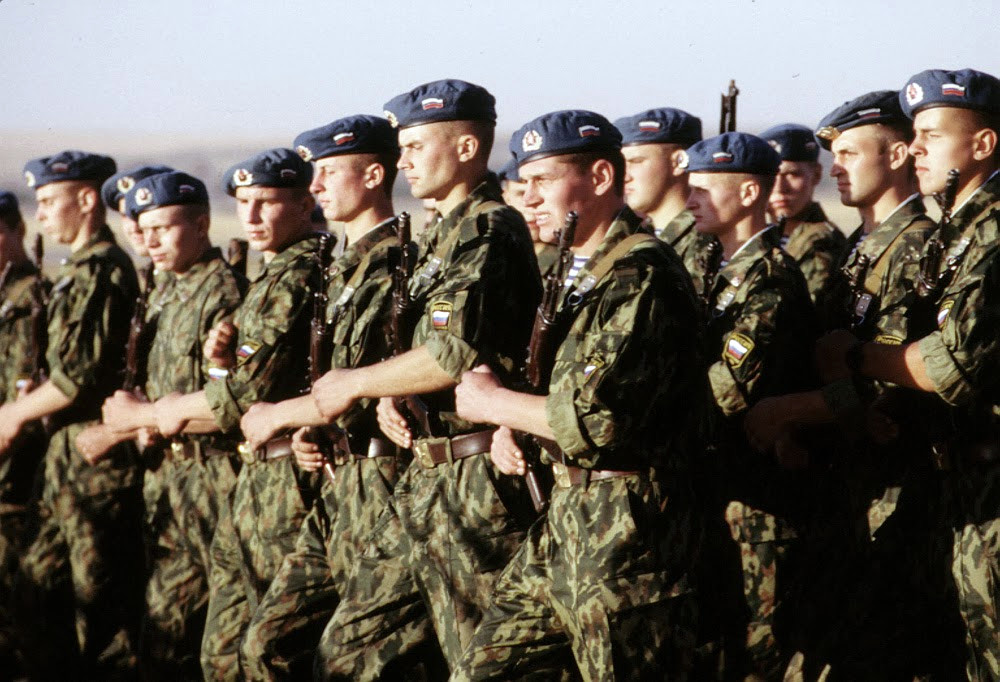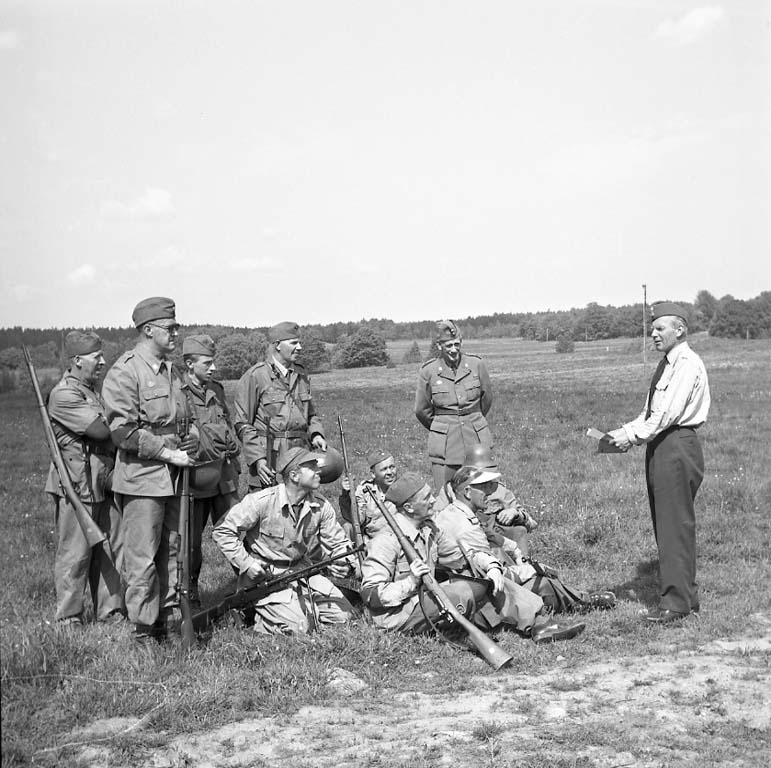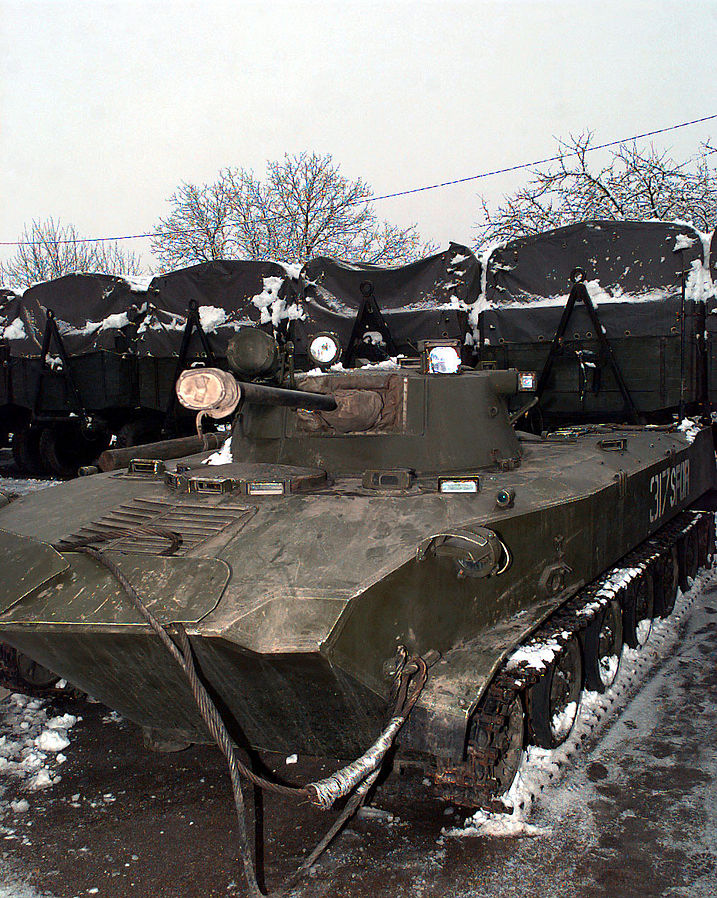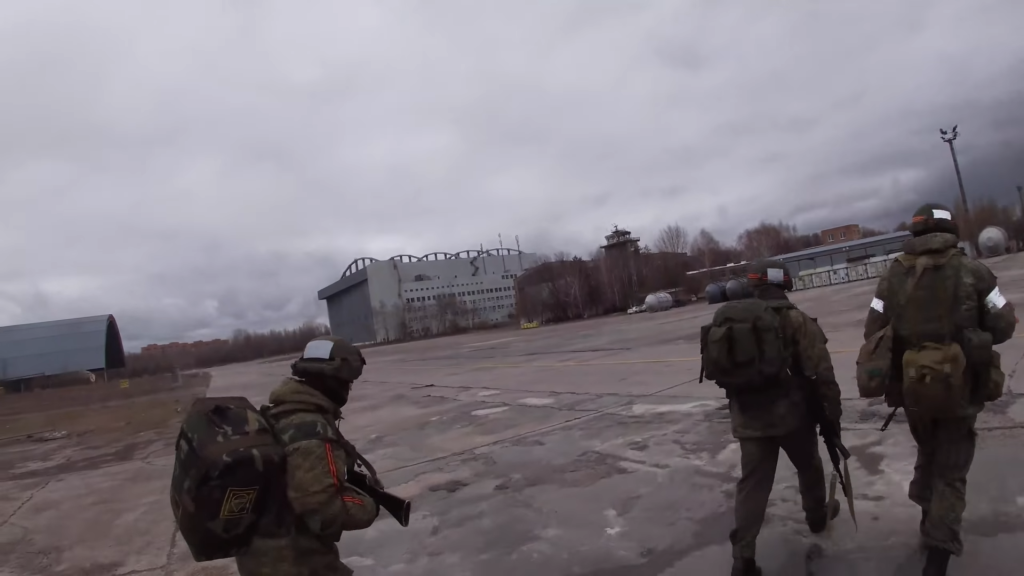Paratroops versus the Home Guard – Airborne forces of the Soviet Union and Russia.
The country with the largest airborne forces when the Second World War broke out was the Soviet Union. They could not however carry out very many major airborne operations, due to the strength of the German Air Force, and most that were attempted ended in failure. Some smaller operations had more success, and the Vozdushno-desantnye voyska (VDV) airborne divisions did well fighting as ordinary infantry. After the war, the Soviet Union continued to develop units which in time were equipped with their own artillery and armoured vehicles, all of which could be set down by parachute or carried in transport aircraft. All that was missing then was to have their own fully capable tanks. They were even supported by special units that could infiltrate and commit sabotage in advance of the main attack. The massive Soviet Union airborne forces have today to a large extent been inherited by the Russian State. They were prioritised and well trained units, with some being ready for action at very short notice. These are precisely the type of units that are needed in order to carry out a strategic surprise attack. Once they have taken over an airfield, heavier materiel can be flown in. Hence airfields, especially those with runways suitable for large transport aircraft, would be their most important targets.

VDV soldiers in Kazakstan in 2018. They are wearing the blue berets and blue and white striped vests that are symbolic for the VDV. Photograph: US Air Force
How could Sweden react to a sudden attack, and above all prevent an attacker from being able to use an airfield to bring in reinforcements? Sweden was dependent on a conscripted army that would require mobilisation. Those forces that could have been put into action against such an attack would be relatively small and were not everywhere available. There were units that after mobilisation were assigned to airfield defence, but even they would have required some time to assemble. This was where the Home Guard came into the picture. During the Cold War the Home Guard consisted mainly of men aged 48 or more, and therefore not at conscription age, along with personnel who because for example of medical reasons would not be conscripted. Their equipment was often rather old and their training time varied from one person to another. But at least the Home Guard personnel had all their equipment at home, including personal weapons and ammunition. This meant that they could be where they were needed within a few hours, ready at the locations they knew well.

A group of Home Guard soldiers in Bohuslän, western Sweden, in 1961. They are wearing older uniforms and carrying obsolete weapons, above all the m/96 Mauser rifle.
This is where the re-purposed tank turrets came in. They were really intended, together with other defences, to be manned by local defensive units, but before such could be mobilised, the defence relied on the Home Guard.
The Home Guard units were of course less well equipped and consisted of older personnel, but on the other hand they had good local knowledge and were well motivated to defend their homes. There are many historical examples where units of a home guard character have offered unexpectedly tough resistance thanks to a high level of fighting morale and better knowledge of the terrain than their attackers. There are examples where such units have been pushed into a corner or surrounded by a superior attacker and chosen to fight to the last bullet, selling themselves dearly rather than submit. The longer a fight continued, so there was a greater chance for the defenders to obtain reinforcements, while the attacking force was being reduced and weakened, if they in turn could not be reinforced and above all obtain more ammunition, fuel and food.

A type BMD-2 armoured vehicle, as used by the VDV. Where necessary this type of vehicle can be dropped by parachute, although preferably brought in by a transport aircraft to a captured airfield. Photograph US Army
Bunker turrets and their associated systems of fortifications and pill-boxes prepared in advance offered the defenders greater possibilities to offer tough resistance at an early stage. Distances had been measured and firing arcs planned in advance. The defenders knew exactly what to do. The value of knowing the terrain and precise distances was clearly illustrated by the sinking of the German heavy cruiser Blücher in the Oslo fjord in 1940. The commanding officer of the Oscarsborgs fortress was familiar with all the distances on the Oslo fjord, and therefore could fire and hit with the Norwegian cannons at the first shot. This in fact was the only one they could fire. After this, it was immaterial whether the Blücher was a heavily armed and modern vessel.
So in a hypothetical battle at a Swedish air base protected by bunker turrets and Home Guard soldiers, if attacked by paratroops the result would not be a foregone conclusion.
A strategic attack today
After the fall of the Soviet Union and the dissolution of the Warsaw Pact, much of the Swedish invasion defensive system was scrapped. This included the bunker turrets and the pre-prepared defensive system. The thought now was that a defence with regular soldiers would be able to deal with any aggressor trying to implement a strategic surprise attack. All that was left of the previous defensive system was the Home Guard, and even this had shrunk.

Home Guard soldiers in 2022. Much has happened in 60 years.
Really the Home Guard would perform the same tasks as before, but with less manpower and lacking pre-prepared defensive positions. In return the Home Guard would be rejuvenated and today’s age spread is much greater. There is better equipment and the training has achieved much better quality. From being treated as a stepchild part of the defence forces, the co-operation between the Home Guard units and the regulars has improved, leading to mutual respect and understanding. This has in turn led to a massive increase in fighting capability within the Home Guard. The reduction in the number of Home Guard soldiers increased the need for them to be able to move quickly to where they were needed, which has led to the provision of units getting their own vehicles for the transport of personnel and materiel. Nowadays the Home Guard also fills the role that used to belong to mobilised local defence units, so that heavier materiel such as heavy mortars are included in their equipment.
So even though the bunkers and defensive emplacements are gone, Home Guard units are still assigned to defend for example an airfield against a landing enemy and can count on other similar domestic units and later regular soldiers and conscripts to come to their aid. The protection formerly provided by bunkers and other defences has been replaced by increased mobility and flexibility. The ability to quickly mount a counterattack is a key factor in the defence against air landings.
Hostomel and Vasylkiv in 2022
At about 8 a.m. local time on February 24th 2022, in connection with the Russian invasion of the Ukraine, VDV forces transported by helicopter arrived, supported by attack helicopters, at the Antonov airfield outside Hostomel, less than 10 kilometres from Kyiv, the capital city of Ukraine. The invading force consisted of 24 -34 helicopters. Information about the fighting around Hostomel differs to some degree, but what happened is generally clear.
The airfield was hit by at least one cruise missile before the attack itself began. From the outset the approaching helicopters were met with small arms fire, machine guns and man-portable anti-aircraft missiles. As a result some of the helicopters, including one of the attack helicopters, were shot down but the airborne unit, which was of battalion size, i.e. several hundred soldiers, despite this managed to land directly on the airfield. The Ukrainians seem to have been taken to some extent by surprise but did offer resistance from the start. A small force comprising Ukraine’s National Guard put up some resistance but in the end was forced to retreat from the airfield. Up to this point the operation appeared to be a textbook example of a strategic surprise attack. A large airfield had been secured, just a stone’s throw from Ukraine’s capital, at the same time as Russian ground troops approached Kyiv from the north. Stage two began and 18 transport aircraft, fully loaded with reinforcements, were on their way to the Antonov airfield.
At this point a Ukrainian special unit counterattacked, together with armed civilians who had begun to gather. The plan was to get close enough to permit anti-aircraft missiles to be fired against the first transport aircraft, shoot it down and thus block the runway. They would also spot for the Ukrainian artillery firing against Russian positions. A little later the Ukrainian National Guard rapid response unit started a heavier attack, supported by Ukrainian Air Force aircraft. The Russian forces held their positions with the aid of their own air support, but the Russian commanders realised that Ukrainian troops armed with anti-aircraft missiles would probably surround the airfield, so the transport aircraft were forced to turn back. When even more Ukrainian units arrived, the VDV soldiers were surrounded and their survivors were obliged to retreat into the nearby forest.

VDV soldiers advance at the Antonov airfield. Photograph mil.ru
On February 25th the VDV tried a new attack, this time with about 200 helicopters, and later also with support from Russian armoured units that had broken through in the north. The airfield was once more captured but it turned out that the runways had been so badly damaged by the fighting that it was impossible to land transport aircraft on them, so that major reinforcements could not be brought in quickly. The VDV units suffered heavy losses during the fighting.
Some critics believe that the failure to secure the Antonov airfield on February 24th was the reason that the whole Russian offensive failed. The resistance from a relatively small Ukrainian force meant that the Russian units could not be reinforced, and allowed enough time for the defenders to counterattack. Once the airfield had been recaptured it was too late. The surprise element had been lost and the price for the VDV was heavy losses.
On February 26th Russia tried to capture the air base of Vasylkiv, 40 km south of Kyiv. However, the defenders were now ready, and the attack was quashed. Once again it is not exactly known what happened, but at least one Russian transport aircraft fully loaded with VDV soldiers was shot down by Ukrainian fighter aircraft, and possibly one more transport was shot down in connection with this operation. The Ukrainian forces suffered over 200 casualties, but the attack was completely foiled with heavy casualties in some of Russia’s front line units. Those soldiers in the transport aircraft had no chance.
If we make a comparison between the historic examples from Norway and Crete, the Ukrainian defenders seem to have done almost everything correctly. Of course it was only a small force to defend the airfield, but right from the start they managed to shoot down some helicopters. A counterattack was started immediately that with small units and civilian volunteers prevented Russian reinforcements from landing and won time so that a larger counterattack could be organised to defeat the Russian forces.
A decisive factor during the first day at Hostomel seems to have been that the Ukrainians managed a rapid counterattack and that they were able to prevent Russian transport aircraft from landing with reinforcements. This had the effect of isolating the Russian battalion that had taken the airfield and defeating it.
When Russian forces succeeded in retaking the airfield the next day, the runways were so damaged that no reinforcements could be flown in. If the Russians had been given enough time to fly in reinforcements in transport aircraft, such as armoured vehicles and artillery, the VDV units could have conquered Kyiv. But the rapid counterattack meant that they lost this opportunity and without its heavy weapons the Russians could do no more than to hold on to the airfield. The damaged runways meant that recapture of the airfield the next day was meaningless. The mechanised part of the VDV units had to advance along with the other Russian ground troops.
